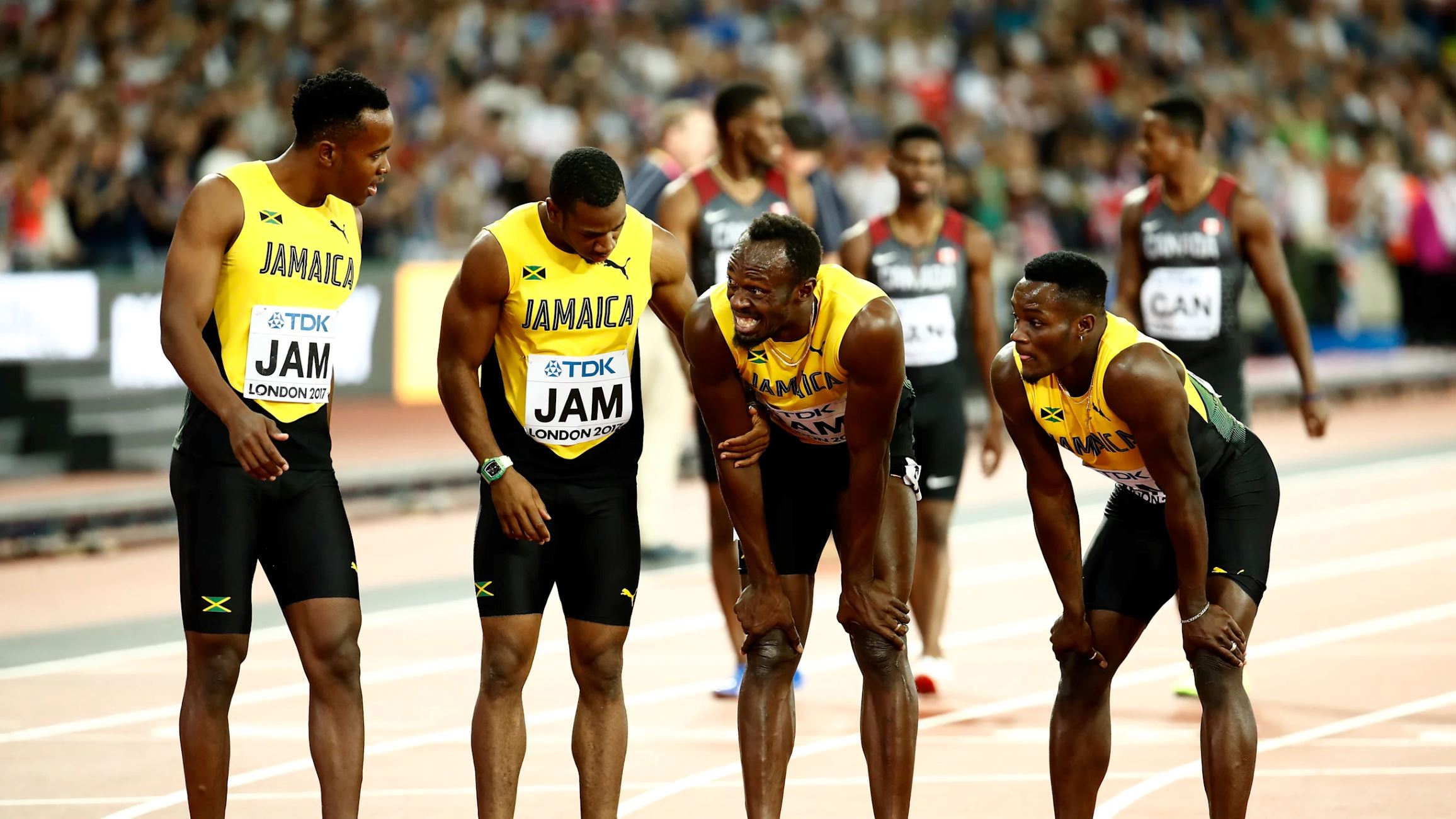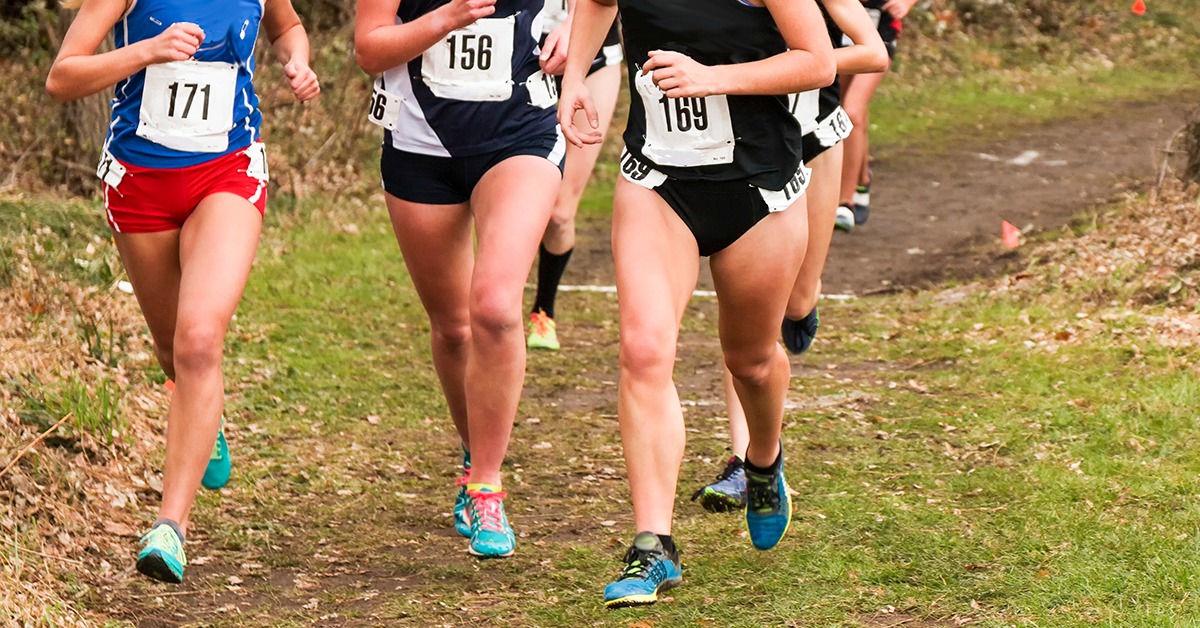Home>Misc>Featured>What Formal Assessment/Test Would An Athletic Performance Coach Use


Featured
What Formal Assessment/Test Would An Athletic Performance Coach Use
Modified: January 2, 2024
Looking to become a top athletic performance coach? Learn about the featured formal assessment and tests used to evaluate athletes' abilities and progress.
What Formal Assessment/Test Would An Athletic Performance Coach Use
Introduction
Athletic performance coaches play a crucial role in helping athletes reach their maximum potential. They not only provide guidance on training and conditioning but also monitor athletes’ progress and identify areas for improvement. One of the effective tools in their arsenal is formal assessments or tests. These assessments help coaches to gather objective data and insights into an athlete’s physical capabilities, which then informs the design of personalized training plans and strategies.
Formal assessments for athletic performance encompass a wide range of tests, targeting various aspects of physical fitness and performance. These tests are designed to measure an athlete’s strength, power, speed, agility, endurance, flexibility, body composition, neuromuscular coordination, and skill-specific abilities. By conducting these evaluations, coaches can create a baseline of an athlete’s current abilities and track their progress over time.
It’s important to note that formal assessments are typically conducted in a controlled and standardized environment, ensuring the validity and reliability of the results. This allows coaches to make informed decisions based on accurate data, leading to more effective training programs tailored to the specific needs of each athlete.
Moreover, formal assessments provide a benchmark against which athletes can measure their own progress and set realistic goals. They serve as motivational tools, as athletes can see their improvements and celebrate their achievements along the way.
Throughout this article, we will explore the different types of formal assessments commonly used by athletic performance coaches. We will delve into the specific areas they assess and discuss their benefits and limitations. Whether you are an aspiring athlete or a coach looking to enhance performance, understanding the role of formal assessments will provide valuable insights into the training process and allow you to optimize athletic performance.
Types of Formal Assessments for Athletic Performance
When it comes to formal assessments for athletic performance, coaches have a range of options to evaluate different aspects of an athlete’s abilities. Let’s explore some of the most common types of formal assessments:
- Strength and Power Assessments: These assessments focus on evaluating an athlete’s maximum strength and explosive power. Tests such as the bench press, squat, deadlift, and vertical jump are commonly used to measure an athlete’s ability to generate force.
- Speed and Agility Assessments: Speed and agility are essential qualities in many sports. Coaches often use timed sprints, shuttle runs, and change-of-direction tests to assess an athlete’s speed, quickness, and ability to change direction efficiently.
- Endurance Assessments: Endurance assessments measure an athlete’s capacity to sustain physical activity over a prolonged period. Common tests include long-distance runs, cycling tests, and VO2 max tests to determine an athlete’s aerobic capacity.
- Flexibility and Mobility Assessments: Flexibility and mobility are crucial for injury prevention and optimal performance. Coaches use tests like the sit-and-reach test, hip mobility assessments, and shoulder mobility tests to evaluate an athlete’s range of motion and flexibility.
- Body Composition Assessments: Body composition assessments provide information about an athlete’s body fat percentage, muscle mass, and overall physique. Techniques such as skinfold measurements, bioelectrical impedance analysis, and DEXA scans are commonly employed.
- Neuromuscular Assessments: These assessments examine an athlete’s neuromuscular coordination, balance, and proprioception. Tests like the Y-balance test, single-leg balance test, and reaction time tests help coaches identify potential areas of weakness or imbalances.
- Skill-specific Assessments: Depending on the sport, coaches may incorporate skill-specific assessments to evaluate an athlete’s proficiency in specific techniques or movements. For example, basketball coaches might use shooting accuracy tests, while soccer coaches may assess passing and dribbling skills.
It’s worth mentioning that these assessments are not exhaustive, and coaches may customize their evaluation protocols based on the unique demands of the sport and the specific needs of individual athletes.
By employing a combination of these assessments, coaches can gain a comprehensive understanding of an athlete’s strengths, weaknesses, and areas for improvement. This knowledge lays the foundation for developing targeted training strategies and optimizing athletic performance.
Strength and Power Assessments
Strength and power are essential components of athletic performance in many sports. Coaches use specific assessments to measure an athlete’s maximum strength and explosive power. These assessments provide valuable insights into an athlete’s ability to generate force, which is crucial for activities such as sprinting, jumping, and throwing.
One common assessment used to evaluate an athlete’s strength is the one-repetition maximum (1RM) test. In this test, athletes perform a maximum effort lift, such as the bench press, squat, or deadlift, to determine the heaviest weight they can lift for a single repetition with proper form. The results of the 1RM test provide coaches with a baseline measure of an athlete’s absolute strength.
In addition to the 1RM test, coaches also employ tests that evaluate an athlete’s explosive power. The vertical jump test is a popular assessment that measures an athlete’s ability to generate power in a vertical direction. Athletes perform a jump and reach as high as possible, and the height reached is recorded. This test assesses lower body power and is commonly used in sports like basketball and volleyball.
Another assessment that measures explosive power is the standing broad jump. Athletes start from a standing position and jump as far forward as they can. This test primarily evaluates lower body power and horizontal explosiveness, which is important for sports like long jump, football, and soccer.
Strength and power assessments are valuable because they provide coaches with an objective measure of an athlete’s physical capabilities. By identifying an athlete’s strength and power levels, coaches can tailor training programs to improve these qualities, thus enhancing performance on the field or court.
It’s important to note that proper technique and biomechanics play a crucial role in these assessments. Coaches ensure that athletes perform the movements correctly, maximizing the efficacy of the assessments and reducing the risk of injury.
Strength and power assessments are not only conducted as initial evaluations to establish a baseline but are also utilized throughout an athlete’s training journey to monitor progress and make adjustments to training programs. By periodically retesting an athlete’s strength and power, coaches can track improvements, identify plateaus, and adjust training protocols accordingly to continue pushing the boundaries of an athlete’s performance.
Speed and Agility Assessments
Speed and agility are crucial components of athletic performance in many sports. Coaches utilize specific assessments to evaluate an athlete’s speed, quickness, and ability to change direction efficiently. These assessments provide valuable insights into an athlete’s ability to move explosively and react quickly, which are essential for activities such as sprinting, cutting, and evading opponents.
One common assessment used to measure an athlete’s linear speed is the timed sprint test. Athletes sprint a specified distance, such as 40 yards or 100 meters, as quickly as possible while being timed. This test provides coaches with a quantitative measure of an athlete’s top speed and acceleration capabilities. It is commonly used in sports such as track and field, football, and soccer.
Agility assessments focus on an athlete’s ability to change direction rapidly and efficiently. The 5-10-5 or pro agility test is a widely used assessment that measures an athlete’s lateral quickness and change-of-direction speed. In this test, athletes start in a three-point stance and must sprint five yards to one side, then change direction and sprint ten yards in the opposite direction, and finally finish by sprinting five yards back to the starting point.
Another assessment that evaluates agility is the T-test. Athletes start at the center of a T-shaped course and must sprint to touch the base of the T, then side shuffle to touch the left and right bases of the T, and finally return to the center. This test assesses an athlete’s ability to change direction in multiple planes of movement quickly and accurately.
Speed and agility assessments are valuable tools for coaches because they provide objective measurements of an athlete’s athletic qualities. By evaluating an athlete’s speed and agility levels, coaches can design training programs that target specific areas for improvement, such as acceleration, top speed, quickness, or change-of-direction ability.
It’s important to consider that these assessments should be performed on proper surfaces, such as a track, field, or gymnasium, to ensure accurate results and reduce the risk of injury. Coaches also focus on teaching proper running mechanics and cutting techniques to enhance an athlete’s efficiency and prevent unnecessary strain on the body.
Speed and agility assessments are not one-time evaluations but should be integrated into regular training sessions to monitor an athlete’s progress over time. By periodically retesting an athlete’s speed and agility, coaches can track improvements, identify areas that require further attention, and modify training protocols to optimize performance.
Endurance Assessments
Endurance is a critical component of athletic performance, particularly in sports that require sustained physical activity over a prolonged period. Coaches utilize specific assessments to evaluate an athlete’s endurance capacity and aerobic fitness. These assessments provide valuable insights into an athlete’s ability to maintain performance levels while minimizing fatigue.
One common assessment used to measure an athlete’s endurance is the long-distance run. Athletes are tasked with running a specified distance, such as a mile or 5 kilometers, in the shortest time possible. This test provides coaches with an indication of an athlete’s endurance and aerobic capacity.
Cycling tests are another popular assessment for endurance evaluation. Athletes cycle on a stationary bike while measuring variables such as distance covered, power output, or time taken. These tests not only assess an athlete’s cardiovascular endurance but also provide data for calculating metrics like VO2 max, a measure of an athlete’s maximal oxygen uptake.
VO2 max tests are considered the gold standard for evaluating an athlete’s aerobic fitness. In these tests, athletes perform physical activity, such as running on a treadmill or cycling on a stationary bike, while their oxygen consumption and heart rate are measured. These assessments provide coaches with a quantifiable measure of an athlete’s aerobic capacity and can be used to determine appropriate training intensities.
Another endurance assessment is the lactate threshold test. This test measures an athlete’s ability to sustain a high-intensity effort before the accumulation of lactic acid leads to fatigue. Athletes perform exercises such as running or cycling at progressively increasing intensities, while blood samples are taken to measure lactate levels. This assessment helps coaches identify an athlete’s optimal training zones to improve endurance performance.
Endurance assessments are valuable because they provide coaches with objective measures of an athlete’s aerobic fitness and endurance capacity. By understanding an athlete’s endurance levels, coaches can design training programs that target specific energy systems, improve cardiovascular efficiency, and enhance an athlete’s ability to perform for extended periods.
It’s crucial to ensure that athletes are properly warmed up and appropriately fueled before undergoing endurance assessments. Coaches also need to consider the safety and well-being of the athletes during these assessments, particularly when performing high-intensity or maximal effort tests.
Endurance assessments should be conducted at regular intervals to monitor an athlete’s progress and adjust training programs accordingly. By retesting endurance periodically, coaches can track improvements, identify plateaus, and make modifications to training protocols to optimize an athlete’s endurance performance.
Flexibility and Mobility Assessments
Flexibility and mobility are crucial components of athletic performance as they directly impact an athlete’s range of motion, injury prevention, and overall movement efficiency. Coaches utilize specific flexibility and mobility assessments to evaluate an athlete’s joint flexibility, muscle elasticity, and overall mobility.
One common assessment used to evaluate an athlete’s flexibility is the sit-and-reach test. In this test, athletes sit on the floor with their legs extended and reach forward as far as possible. The distance they reach is measured, providing an indication of hamstring and lower back flexibility.
Ankle flexibility is another important aspect assessed, especially in sports that require rapid changes in direction. The ankle dorsiflexion test is used to measure the range of motion in ankle dorsiflexion, which is essential for activities like squatting, lunging, and running. The athlete places their foot on a measuring device and attempts to bring their knee forward, with the measurement indicating the degree of ankle flexibility.
Furthermore, coaches also assess hip mobility using tests such as the Thomas Test or the hip internal/external rotation assessment. These tests evaluate an athlete’s ability to move their hip joint through a full range of motion, which is crucial for movements like kicking, lunging, and lateral movements.
Shoulder mobility is also assessed as it plays a vital role in overhead activities in sports such as swimming, tennis, and basketball. Tests like the shoulder mobility test or the crossover test assess an athlete’s ability to move their shoulder joints through a full range of motion. Coaches utilize these assessments to identify any limitations or asymmetries that may hinder performance or predispose athletes to injuries.
Flexibility and mobility assessments help coaches identify areas of tightness, imbalance, or restricted range of motion in an athlete’s musculoskeletal system. This information informs coaches about the specific areas that require focus in training programs to improve flexibility and promote optimal movement patterns.
Coaches must ensure that assessments are conducted safely, without forcing movements beyond an athlete’s comfortable range. Gentle stretching or warm-up exercises may be performed before assessments to optimize flexibility and minimize the risk of injury.
Regular retesting is vital to monitor improvements in flexibility and mobility over time. By incorporating targeted stretching exercises, mobility drills, and corrective exercises into training plans, coaches can enhance an athlete’s flexibility, joint mobility, and movement efficiency, ultimately leading to improved athletic performance.
Body Composition Assessments
Body composition assessments provide coaches with valuable insights into an athlete’s body fat percentage, muscle mass, and overall physique. These assessments help coaches monitor changes in an athlete’s body composition over time, which can be essential for optimizing athletic performance and ensuring optimal health and well-being.
There are various methods used to assess body composition, each with its own advantages and limitations. One common method is skinfold measurements, which involve using calipers to measure the thickness of the subcutaneous fat in specific areas of the body, such as the chest, abdomen, and thigh. These measurements are then used to estimate overall body fat percentage.
Another widely used method is bioelectrical impedance analysis (BIA), which measures the resistance of electrical current as it passes through different tissues in the body. BIA devices estimate body fat percentage by analyzing the differences in electrical conductivity between fat mass and lean mass.
More advanced body composition assessments include techniques such as dual-energy x-ray absorptiometry (DEXA) scans and air displacement plethysmography (ADP). DEXA scans use low-dose x-rays to provide detailed information about an athlete’s fat mass, lean mass, and bone mineral density. ADP, commonly known as the Bod Pod, measures an athlete’s body density through air displacement to estimate body composition.
Body composition assessments are valuable tools for coaches because they provide objective data that can guide training and nutrition strategies. By monitoring changes in body composition, coaches can ensure that athletes are maintaining a healthy weight, optimizing muscle mass, and minimizing excessive body fat. This information can be especially important in weight-dependent sports or sports where power-to-weight ratio is a significant factor.
It’s important to note that body composition assessments should be interpreted in conjunction with other factors such as performance outcomes, overall fitness, and individual goals. Body composition alone does not determine an athlete’s ability or performance, but it can contribute to a comprehensive understanding of an athlete’s physical condition.
Coaches must also consider the psychological and emotional aspects of body composition assessments. Discussions surrounding body composition should be approached with sensitivity, emphasizing health and performance rather than solely focusing on appearance or aesthetics.
Regular body composition assessments, coupled with appropriate nutrition and training interventions, can help coaches track an athlete’s progress, adjust training strategies if necessary, and optimize their body composition for improved performance and overall well-being.
Neuromuscular Assessments
Neuromuscular assessments provide coaches with valuable insights into an athlete’s neuromuscular coordination, balance, and proprioception. These assessments help identify any weaknesses or imbalances in an athlete’s neuromuscular system, which can impact movement efficiency, stability, and injury risk.
One common neuromuscular assessment is the Y-balance test. This test assesses an athlete’s balance, stability, and neuromuscular control in single-leg stances. Athletes reach as far as possible in three directions while maintaining balance on one leg. The results provide valuable information about an athlete’s symmetry, stability, and potential injury risk.
Another assessment used to evaluate balance and stability is the single-leg balance test. Athletes stand on one leg for a set duration, typically with their eyes closed, while their ability to maintain balance is assessed. This test helps coaches assess an athlete’s proprioception and overall stability.
Reaction time tests are also commonly used in neuromuscular assessments. These tests measure the time it takes for an athlete to react to a stimulus, such as an auditory or visual cue. Reaction time is a critical component in many sports, as the ability to anticipate and react quickly can greatly impact performance outcomes.
Additionally, coaches may use specific tests to assess an athlete’s coordination and agility. The Illinois Agility Test, for example, evaluates an athlete’s ability to change direction quickly and navigate through a series of cones or markers. These tests help coaches identify any deficits in an athlete’s coordination and agility that may impact performance on the field or court.
Neuromuscular assessments are valuable tools for coaches as they provide objective measures of an athlete’s neuromuscular capabilities. By identifying any areas of weakness or imbalance, coaches can design targeted training programs that address these specific areas and improve neuromuscular coordination and stability.
It’s important to note that neuromuscular assessments should be performed in a safe and controlled environment to prevent injuries. Coaches must also consider an athlete’s current skill level and experience when interpreting the results, as some assessments may be more challenging for beginners or athletes with limited training background.
Regular retesting of neuromuscular capabilities allows coaches to monitor an athlete’s progress and make adjustments to training protocols accordingly. By integrating neuromuscular training exercises into their programs, coaches can enhance an athlete’s coordination, balance, agility, and overall neuromuscular control, resulting in improved performance and reduced risk of injuries.
Skill-specific Assessments
Skill-specific assessments play a crucial role in evaluating an athlete’s proficiency in specific techniques or movements required for their sport. These assessments help coaches identify an athlete’s strengths, weaknesses, and areas for improvement, enabling more targeted training and skill development.
For instance, basketball coaches may use shooting accuracy tests to assess an athlete’s shooting technique, consistency, and range. These assessments often involve shooting from various positions on the court and under different conditions, such as with defenders or under time constraints.
In soccer, coaches may assess an athlete’s passing and dribbling skills. These assessments can involve timed passing drills, accuracy tests, or dribbling through cones in a controlled manner to evaluate an athlete’s ball control and technique.
In sports like gymnastics or figure skating, coaches rely heavily on skill-specific assessments to determine an athlete’s proficiency in executing specific routines, flips, spins, or jumps. These assessments often involve scoring systems that evaluate elements such as technique, difficulty, execution, and overall performance.
Additionally, coaches may use timed drills or obstacle courses to assess an athlete’s speed, agility, and coordination in sports like track and field, football, or tennis. These assessments provide insights into an athlete’s ability to perform specific movements or actions under controlled conditions.
Skill-specific assessments are valuable as they provide coaches with a clear understanding of an athlete’s technical abilities within the context of their sport. The results of these assessments help coaches tailor training programs and drills to address specific areas that require improvement and enhance overall performance.
It’s important for coaches to create skill-specific assessments that simulate real-game situations as closely as possible. Including pressure, competition, and various environmental factors can provide a more accurate reflection of an athlete’s skill level and readiness to perform under different conditions.
Regularly retesting skill-specific abilities allows coaches to monitor an athlete’s progress and track improvements over time. By focusing on targeted skill development, coaches can enhance an athlete’s technical proficiency, decision-making, and overall performance in their respective sport.
It’s worth noting that skill-specific assessments should not be used in isolation but should be integrated alongside assessments of physical fitness, such as strength, power, speed, endurance, flexibility, and mobility, to provide a comprehensive evaluation of an athlete’s overall capabilities.
By incorporating skill-specific assessments into the coaching process, coaches can gain valuable insights into an athlete’s technical competency, tailor training programs to address individual needs, and ultimately enhance performance in their chosen sport.
Selecting the Right Formal Assessment for Athletes
When it comes to selecting the right formal assessment for athletes, coaches need to consider several factors to ensure the assessments align with the athletes’ goals, sports-specific requirements, and individual needs. Here are some key considerations to keep in mind:
1. Sport-Specific Demands: Different sports have unique physical demands. Coaches should choose assessments that closely mimic the movements and skills required in the sport. Assessments that closely align with the specific demands of the sport provide more accurate and relevant information for designing effective training programs.
2. Training Phase: The phase of an athlete’s training program should also influence the choice of assessments. For example, during the preseason, it may be beneficial to conduct broad assessments that provide a comprehensive overview of an athlete’s physical capabilities. As the season progresses, more specific and skill-based assessments may be incorporated to track performance improvements.
3. Individual Needs and Goals: Each athlete has unique strengths, weaknesses, and goals. Coaches should consider individual characteristics and areas for improvement when selecting assessments. Tailoring assessments to individual needs helps create personalized training plans that address specific weaknesses and optimize performance.
4. Validity and Reliability: Coaches should select assessments that have demonstrated validity and reliability. Valid assessments measure what they intend to measure, while reliable assessments produce consistent results. Using scientifically validated assessments ensures that the data collected is accurate and dependable for making informed training decisions.
5. Practicality: Coaches should consider the practicality of assessments in terms of time, resources, and equipment required. Assessments should be feasible to implement within the constraints of the training environment. Consideration should be given to the accessibility and cost-effectiveness of the assessments as well.
6. Safety: Athlete safety is of utmost importance. Coaches should choose assessments that pose minimal risk of injury and ensure that proper warm-up, technique, and safety protocols are in place. Athletes should feel comfortable and supported throughout the assessment process.
7. Progress Monitoring: Coaches should select assessments that allow for regular monitoring of an athlete’s progress. Assessments that can be repeated at specific intervals provide valuable data on an athlete’s development, allowing for adjustments to training plans and goals as needed.
By carefully considering these factors, coaches can select the right formal assessments that align with the athletes’ needs, provide accurate and reliable data, and contribute to effective training and performance improvement.
Benefits of Formal Assessments in Athletic Performance Coaching
Formal assessments play a vital role in athletic performance coaching, offering numerous benefits for athletes and coaches alike. Here are some of the key benefits of incorporating formal assessments into the coaching process:
1. Objective Data: Formal assessments provide coaches with objective data and measurements of an athlete’s physical capabilities. This data serves as a baseline and allows coaches to accurately track an athlete’s progress over time. Objective data helps remove subjective biases and provides a clear picture of an athlete’s strengths, weaknesses, and areas for improvement.
2. Personalized Training Programs: Formal assessments enable coaches to customize training programs based on the specific needs and goals of each athlete. By identifying an athlete’s limitations or areas for improvement through assessments, coaches can design targeted interventions to address those areas. This personalized approach optimizes training efficiency and enhances an athlete’s overall performance.
3. Performance Tracking and Goal Setting: Assessments provide benchmarks for athletes to track their progress and set realistic goals. Regularly retesting allows both athletes and coaches to see tangible improvements, reinforcing motivation and highlighting areas that require further development. Performance tracking and goal setting help athletes stay focused, monitor progress, and achieve long-term success.
4. Injury Prevention and Risk Reduction: Formal assessments help coaches identify potential injury risks and implement strategies to prevent injuries. By evaluating an athlete’s movement patterns, balance, and stability, coaches can implement targeted exercises and corrective techniques to address any areas of weakness or imbalance. This proactive approach promotes injury prevention and ensures athletes perform at their optimal level of fitness and health.
5. Talent Identification and Development: Formal assessments can be valuable tools in talent identification, especially at younger ages. Assessments help coaches identify athletes with specific physical abilities or potential for certain sports or positions. These assessments aid in talent development by providing insights into an athlete’s strengths and areas for improvement, allowing coaches to tailor training programs to maximize their potential.
6. Motivation and Accountability: Formal assessments can be powerful motivators for athletes. Seeing tangible improvements in their performance through assessment results boosts confidence and provides a sense of accomplishment. Additionally, assessments hold athletes accountable to their training goals, providing a clear measure of progress and encouraging consistency and dedication to training.
7. Communication and Collaboration: Formal assessments facilitate effective communication and collaboration between coaches, athletes, and other members of the coaching staff or multidisciplinary team. Assessment results provide a common language and understanding of an athlete’s capabilities, enabling coaches and support staff to work together in optimizing training strategies and injury prevention techniques.
By incorporating formal assessments into athletic performance coaching, coaches can gather objective data, tailor training programs, prevent injuries, identify talent, foster motivation, and enhance communication. These benefits ultimately contribute to the overall development and success of athletes in their respective sports.
Limitations and Considerations in Using Formal Assessments
While formal assessments offer valuable insights into an athlete’s physical capabilities, it is essential to be aware of their limitations and consider several factors when implementing them in athletic performance coaching. Here are some key limitations and considerations to keep in mind:
1. Partial Assessment of Performance: Formal assessments provide a snapshot of an athlete’s physical capabilities but may not fully capture the complexity of their performance in real-game situations. Assessments focus on isolated aspects of fitness and may not account for factors such as decision-making, tactical awareness, and mental resilience that are integral to athletic performance.
2. Influences of Context and Environment: An athlete’s performance in assessments can be influenced by the testing environment, equipment used, and other contextual factors. Coaches should strive to create a testing environment that closely mimics real-game conditions to ensure the assessments are as representative as possible.
3. Performance Variability: Athlete performance can vary due to numerous factors, such as daily fluctuations in readiness, fatigue, or external stressors. Assessments conducted on different days or under different conditions may yield different results. Coaches should consider trends and patterns over time rather than relying solely on single assessment results.
4. Potential for Bias and Subjectivity: While formal assessments aim to provide objective data, there is potential for bias and subjectivity in their interpretation. Coaches should ensure standardized protocols, consistent evaluators, and reliable measurement techniques are used to minimize bias and increase the reliability of assessment results.
5. Individual Differences and Response Variability: Every athlete is unique, with different physiological capacities and response patterns to training. Coaches should consider individual differences and avoid relying solely on population norms when interpreting assessment results. Tailoring training programs to individual needs and tracking progress on an individual basis is crucial for optimal athlete development.
6. Ethical Considerations: Coaches must prioritize the welfare and safety of athletes when conducting formal assessments. They should ensure that assessments are conducted in a safe and controlled manner, with proper warm-up, cool-down, and safety protocols in place to reduce the risk of injury or harm to athletes.
7. Integration with Holistic Approach: Formal assessments should be integrated with a holistic approach to athlete development. Considering factors such as skill acquisition, tactical awareness, psychological factors, and overall well-being is essential for complete athlete development. Formal assessments should complement other coaching strategies rather than replace them.
By addressing these limitations and considerations, coaches can maximize the effectiveness of formal assessments in athlete development. Utilizing a combination of assessments alongside a comprehensive coaching approach will provide a more holistic understanding of an athlete’s abilities and support their growth and success in their chosen sport.
Conclusion
Formal assessments are powerful tools in athletic performance coaching, providing coaches with objective data and insights into an athlete’s physical capabilities. These assessments enable coaches to design personalized training programs, track progress, prevent injuries, and optimize performance. From strength and power assessments to speed and agility evaluations, endurance tests, flexibility and mobility assessments, and skill-specific evaluations, each type of formal assessment offers unique information about an athlete’s abilities.
Additionally, coaches must consider various factors when incorporating formal assessments into their coaching process. They should select assessments that align with sport-specific demands, individual needs, and training phase. Validity, reliability, practicality, safety, and progress monitoring should also be considered when selecting and implementing assessments.
While formal assessments have their limitations and considerations, such as partial assessment of performance, contextual influences, and individual variability, coaches can address these limitations through standardized protocols, individualized assessments, and a holistic coaching approach that integrates other factors contributing to athletic performance.
By utilizing formal assessments effectively and considering the specific needs and goals of each athlete, coaches can optimize training strategies, track progress, identify talent, prevent injuries, foster motivation, and enhance communication and collaboration among the coaching team. Formal assessments provide coaches and athletes with valuable data and benchmarks to guide training decisions, set realistic goals, and promote continuous improvement.
In conclusion, formal assessments are valuable tools that should be employed in athletic performance coaching to enhance athlete development and optimize performance. By leveraging the insights gained from formal assessments and integrating them into comprehensive coaching strategies, coaches can unlock the full potential of athletes and help them achieve their goals in their chosen sports.









